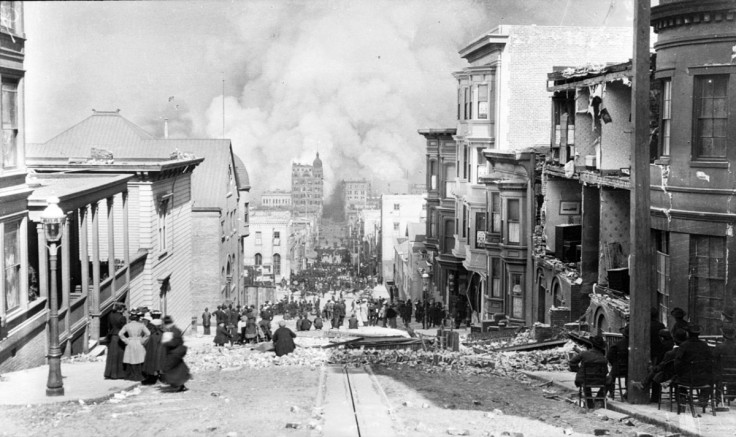Forget the Big One: San Francisco Could be Hit by 'Series of Large Earthquakes', Scientists Warn

San Francisco's Bay Area could be hit by a series of large earthquakes every five years rather than one 'Big One', researchers have said.
Analysing earthquake scenarios for the Bay Area, scientists at the US Geological Survey have said there are two possible scenarios for earthquakes in the region over the coming years.
Lead author David Schwartz said: "The plates are moving. The stress is re-accumulating, and all of these faults have to catch up. How are they going to catch up?"
Published in the Bulletin of the Seismological Society of America, data shows that a cluster of closely timed earthquakes over 100 years during the 17<sup>th and 18<sup>th centuries released as much stress on the Bay Area's major faults as the Great 1906 San Francisco earthquake.
Energy released during the area's earthquake cycle occurs along the main faults - San Andreas, San Gregorio, Calaveras, Hayward-Rodgers Creek, Greenville, and Concord-Green Valley faults.
Cycles reflect the accumulation of stress, releasing stress as a slip on a fault and subsequent re-accumulation.

"The 1906 quake happened when there were fewer people, and the area was much less developed," Schwartz said. "The earthquake had the beneficial effect of releasing the plate boundary stress and relaxing the crust, ushering in a period of low level earthquake activity."
The Bay Area has not experienced a full earthquake cycle since it has been occupied by people recording earthquake activity. The Mission Dolores and the Presidio in San Francisco have kept records since 1776.
By excavating trenches across faults, researchers were able to look back as far as 1600. In their study, they suggest that between 1690 and 1776, there was a series of earthquakes ranging from magnitude 6.6 to 7.8: "What the cluster of earthquakes did in our calculations was to release an amount of energy somewhat comparable to the amount released in the crust by the 1906 quake."
Looking to the future, the authors believe the energy accumulated will either be released in one great earthquake or a series of large earthquakes, the latter being more likely, researchers said.
"It's one thing to have a 1906-like earthquake where seismic activity is shut off, and we slide through the next 110 years in relative quiet," Schwartz said. "But what happens if every five years we get a magnitude 6.8 or 7.2? That's not outside the realm of possibility."
© Copyright IBTimes 2025. All rights reserved.






















